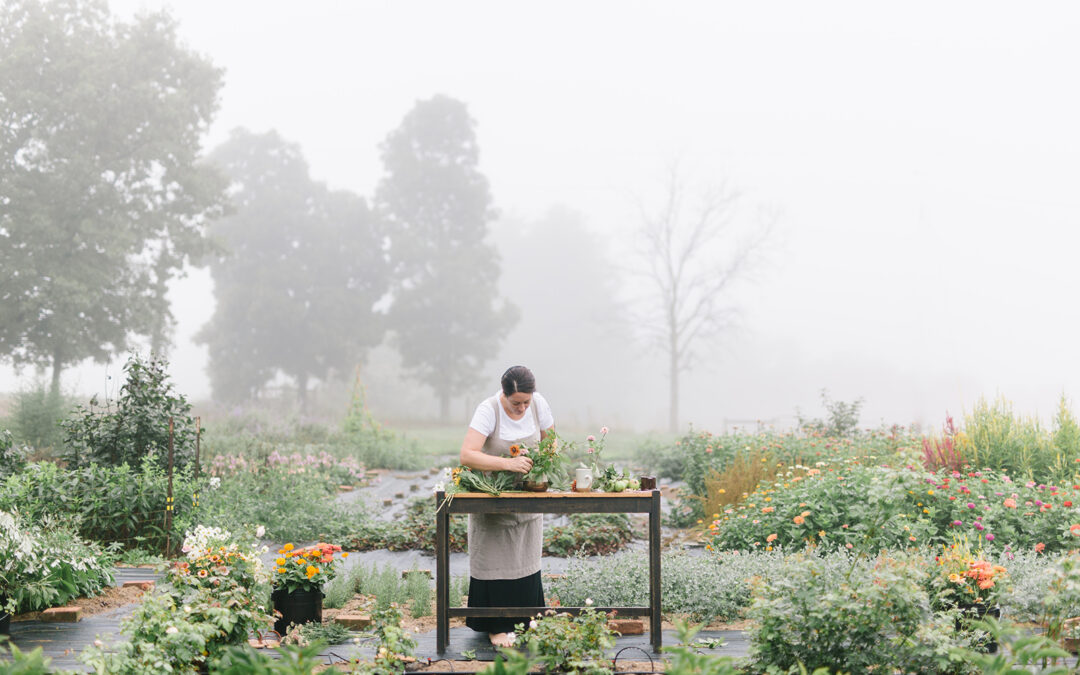Easy To Grow Cut Flowers
Today we’re talking about easy to grow cut flowers, but first I should acknowledge that it’s been a while since you heard from us here.
I could follow that up with a string of apologies or excuses, but I won’t bore any of us with that. If you’re on our email list, (and you should be because that’s were the good stuff will happen) you already know last year overwhelmed us with it’s glut of flowers. We’ve got bright hopes and dreams for 2019, and a plan that feels like a better fit than last year’s ill-conceived vision. Live and learn, folks. It’s the best way to keep moving forward.
Several of you have asked for a list of easy to grow cut flowers.
I’m happy to oblige. Ask me about growing flowers and there’s a distinct possibility that you’ll have to force me to stop. I’ve occasionally surprised a glazed over eye and a faint look of boredom in the middle of what I considered an interesting flower discussion. Whoops.
I’m passionate about flowers, and I think everyone should take time to make some beauty in their lives. Flower gardening isn’t rocket science, and I think with a little perseverance, anyone can figure it out.
With the current pace of life, we need the therapy of gardening now more than ever. Our bodies benefit when we get our fingers dirty and let our minds wander. We need to plant seeds and wait for the flowers to come. Okay, hopping off my soapbox now.

Let’s talk about this list of easy to grow cut flowers.
Here at Root Design, our growing zone is 6a and we’re in the Midwest, so this list is slanted in that direction. Each flower on this list can be planted directly in the ground after the last frost, or you can follow the seed packet instructions and start them indoors a couple of weeks before your last frost date.
Let’s get to it.
Cosmos
An ethereal but hardy flower, cosmos is our go-to flower when we want something to dance or float above a bouquet. ‘Purity’ and ‘Double Click Snow Puff’ are our favorite white varieties. If you’re looking for color, there are so many gorgeous varieties to try. ‘Rubenza’ and ‘Double Click Cranberries’ are on our wish list for another year.
If you start cosmos indoors, don’t start them too early. They can get leggy quickly. I always consult the supplier’s instructions, but I rarely start them more than four weeks before it’s safe to plant them out.
Globe Amaranth
Profuse is a word that perfectly describes this generous little workhorse of a flower. Globe amaranth (or gomphrena) adds a pop of color and fun texture to bouquets. We’ve had good success with the ‘QIS’ series.
I like to crowd these into the garden when I plant them (6″ spacing) so that they produce longer stems. If you keep cutting them, they’ll produce flowers up until frost.
Trailing Amaranth
We’ve grown ‘Coral Fountain’ with success, but ‘Emeral Tassels’ and ‘Love-Lies-Bleeding’ look like fun kinds to try as well.
We love the beautiful draping habit of trailing amaranth. Just remember to pinch or cut the main stem when it’s about a foot high so you get many smaller usable stems instead of one giant, hard to use stalk.
Zinnia
The queen of easy to grow annuals, zinnias are probably the most familiar cut flower in the Midwest. The ‘Benary’s Giant’ series and the ‘Oklahoma’ series are some of our favorites. We love the look of the ‘Zinderella’ varieties, too, but sadly they don’t seem to love us back.
Our garden gets a lot of misty mornings. They’re gorgeous, but all that dew usually makes our zinnias crumple into a mildewy heap come July or August. There are sprays to help with this, but since we like to keep our flowers as chemical free as we can, we don’t use a lot of those. Instead, we plant several successions of zinnias so that when the first ones are starting to mildew, we can chuck those plants and start cutting from the subsequent plantings as they start to bloom.
I have a few homemade sprays in my repertoire that I like to use on the zinnias. Sometimes I think they work, other times I wonder if I’m just imagining things.
Basil
A standard basil like ‘Gennovese’ as well as ‘Mrs. Meyer’s Lemon’ basil and a purple kind called ‘Amethyst’ will all add lovely textures and scents to your summer bouquets. Young stalks are prone to wilt, but if you wait until the plant has matured a bit and get them into water as soon as you cut them, they’ll last for up to a week in a bouquet.
Fun fact: if you leave your basil cutting in water long enough, it will start growing roots. This new little plant can be potted up and planted out as well.
Sunflower
These are the quintessential country flower. There are so many beautiful varieties available so you’re no longer stuck with just a generic yellow. ‘Moulin Rouge’ is one we’ve recently discovered and really like.
We like to have our sunflowers bloom from mid-summer on, so we rarely start these indoors. We simply poke the seeds down into a prepared bed sometime after our last frost. If you choose a branching kind, pinch out the main stem when it’s around eighteen inches tall. If you have a single stem variety, DON’T PINCH. You’re taking out your once chance for a flower. Don’t stop the party before it has a chance to start.
Nasturtium
These little jewels have the added bonus of being edible and will add a peppery flavor to salads. ‘Jewel Mix’ is one we often grow.
Nasturtiums (or nah-stur-shil-ums if you’re acquainted with Winnie the Pooh) have shorter stems than a lot of the others on this list, but if you plant them close together, it encourages them to stretch out a bit.
If you’d like to download a PDF of this list of easy to grow cut flowers, here’s a link to snag a copy.
Our favorite places to buy seeds are Johnny’s Selected Seeds and Swallowtail Garden Seeds.
Before we wrap it up, here are several tips for getting the most out of your flowers.
If you want your plants to branch from the base and give you more blooms per plant, pinch or cut out the main growing stem. The recommended height for pinching varies by variety, but if you pinch them when the plants are between 6″-12″ you should be fine.
Keep cutting your flowers as they bloom, all summer long. After a flower’s petals fall off and it starts to set seeds, that signals to the plant to begin shutting down. Remove the spent blooms and you prolong the blooming life of your plants. Dead-heading, or simply cutting off the spent bloom, is fine if you aren’t planning to make bouquets. If you plan to make bouquets and want longer stems, cut deeper into the plant. This is especially true of cosmos and zinnias. It sounds crazy and can be scary to cut what feels like half your zinnia plant away, but it works.
Having enough greens for your bouquets can be a problem. We forage a lot of our greens from trees and bushes to fill out our bouquets and help to add structure. Whenever you do cut a woody stem, be sure to cut about half an inch up the base of the stem so that it can stay hydrated.
So, what will you grow this year? Are any of these easy to grow cut flowers on your list? Did we miss any of your favorites? You know we love to hear from you!
Rosita




I’m planting Globe Amaranth and Nasturtium for the first time this year, so thanks for the tips!
I’d love to chat! I like these suggestions as well, I’m curious about your seed sources. I order 90%of my seeds from geoseed but that doesn’t seem very normal. Is there a reason you don’t use them?
We’re a pretty small operation, so we don’t need large seed quantities. Maybe that’s why? We also like Johnny’s soil blockers and netting, so it’s an easy one stop shop for us.
Hi! Love your blog, since my sister and I also grow cut flowers to sell… We’re very small. We LOVE geoseed!!! They are VERY reasonable priced (way cheaper then Johnies n way more variety. Even if you dont use all of the pack of seeds, they’re still cheaper) The Variety is AMAZING. And the germination is super-duper. The only thing we dont like about them is – no pictures :/ and everything is listed under their technical name. But i google, and cross reference other catologs for picture, then highlight the ones we like. And reference my highlighted, full of notes copy from one yr to the next. And whenever I hear of a new variety or color of anything, they almost ALWAYS have it. Do you know of any flower farmers in your area, who you could split packs of seeds with? Just an idea. Happy growing.
love to see you following your dream, friend!